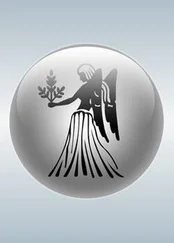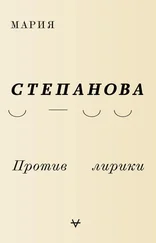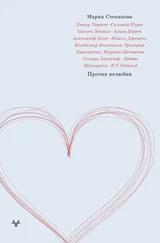The philosopher Yakov Druskin was a member of the Chinarei, a group of Leningrad poets and philosophers who had formed a very close circle in the thirties and who were slowly squeezed out of existence by Soviet reality. They were excluded from official writing structures (by their own choice and also because the radical nature of their texts hardly met the expectations placed upon “fellow travelers,” those writers who weren’t currently aligned with official party policy, but were “catching up”). For a while they flourished in their modest way, working for children’s magazines, writing virtuosic poems and short stories, playing cards and spot-the-difference, going to the races and sunbathing on the thin strip of Neva sand by the Peter and Paul Fortress. Little by little their untroubled and dimly lit patch of shade shrunk in size, and they became more and more conspicuous. Members of the circle were arrested, exiled to other towns, or they lost their work, but they kept coming back, as if unaware how transparent their spare little existence had become. In his diaries Daniil Kharms, perhaps the best known of all the Chinarei, interspersed prayers, metaphysical problems, and longings for female folds and smells with the odd note that he had no money, nowhere to get money, and was growing hungry. Kharms did indeed die of hunger in an NKVD jail in the terrible winter of 1942, during the Siege of Leningrad. Aleksandr Vvedensky died in a freight car during his enforced evacuation from Leningrad in December 1941. Leonid Lipavsky went missing in action in September 1941. Nikolai Oleinikov didn’t last as long as his friends — he was executed in 1937.
Druskin alone survived, hardly understanding himself why he had been spared. He never once ceased his conversation with the dead. More and more space in his philosophy notebooks is given over to writing out dreams in which he sees his dead friends and tries to make certain that it is really them, that they have returned at last. He can’t be certain; the experiment is fruitless. Druskin and his friends are cutting open the chest of a person they believe to be Lipavsky “to see whether this is a dream or not” but they immediately forget what they are trying to prove. One of his ghosts doesn’t want to acknowledge him, another is transformed so he looks like a Soviet writer (just as he might a log of wood or a marble table or a wardrobe). On April 11, 1942, Druskin writes up yet another dream meeting with his dead friends. He dreams of them all the time, he sees them more now than when they were alive:
We all gathered, I prepared some refreshment, some fizzy water. We looked at each other and laughed. Who had we come to look like? Lipavsky, for instance, he and I, we’ve changed more than the rest. But L is utterly unlike himself. And the third L — well I would never have taken him for L. A. D. I. [Kharms?] I would barely have recognized him. And perhaps it isn’t him, although it should be. And there were some others around, one of them was Shura (Vvedensky), but which one? And there was a Pulkanov there. With a different surname.
Pulkanov is not a common surname. No one in Druskin’s circle had that name. The dream had fitted the name over someone like a cloak and masked that person, hidden him so well we don’t even know who he was. Perhaps he was the dreamer.
6. Charlotte, or Acts of Insubordination
I love books, films, and stories that begin like this: a person arrives at a small home in a remote part of let’s say France, opens the windows, goes out onto the balcony, moves the furniture around. She lays out her books, crawls under the table to plug in her computer, studies the contents of an unfamiliar kitchen cupboard and chooses the mug she will use. She walks to the village for the first time and buys tomatoes and cheese. Sits down at a table in the only local café and drinks coffee or wine. She wrinkles her eyes in the bright sun and returns to the house. She watches the television, looks out of the window, up at the ceiling. If she’s a writer (let’s say) then she starts work earlier in the morning.
Usually this moment of unspoiled happiness, work that has at last found its proper space and time, blessed utter peacefulness, is interrupted by some unasked-for act. In Islamic texts there is a euphemism for death — “the destroyer of pleasure, disbander of gatherings” — and this seems to me to be the perfect description of the storytelling dynamic, which has the task of pitching the peaceful prehistory at such an angle that everything is set in motion and the hero begins the slow roll down the slope, arousing both the reader’s sympathy and irritation. We know and dread what literature and history offers us in this situation. The heroine will never finish the page she is writing because uninvited guests will arrive. The hero has no time on his own because a murder happens nearby. The resurrection is halted because a war has just begun.
At the end of 1941, twenty-four-year-old Charlotte Salomon did something rather odd. She left Villefranche-sur-Mer, a villa with a view over the Côte d’Azur where she had been staying with her grandparents. Things were different now: the money had run out, her grandmother had died, and they were relying on the pity or the whim of their hosts. Like many other German Jews, they had once been respectable, but hardly knew where to turn now. Charlotte left abruptly, in the manner of a person suddenly standing up and leaving a room. She took lodgings in nearby Saint-Jean-Cap-Ferrat and stopped seeing friends. It isn’t clear what she lived on, but we know where she lived, in a tiny hotel with the age-old name “La Belle Aurore.” She spent six months there, quite alone, working on what would be her great work, Life? Or Theater? , a sequence of 769 gouache pictures in which images are interspersed with text and musical phrase. There are also a number of pages of material that didn’t make it into the main body of the piece: all in all she painted 1326 gouaches. When she ran out of paper she painted on the other side of the rejected sheets, and toward the end of the process she painted on both sides of every sheet.
The gouaches were painted on sheets of A4 paper in such terrible haste that she had to hang them around the walls of her little room so they would dry quicker. They were overlaid with tracing paper on which phrases, “stage directions,” and what might be termed “instructions” were written to tell the viewers what musical phrase they should have in their head when looking at the picture. Sometimes this could be complicated: the melody itself had another text attached, a bitter little street ditty to the tune of the “Horst-Wessel-Lied” or “Habanera.” Music was an intrinsic part of the narrative. The pages themselves are ordered in three parts with a prologue and epilogue and even a defined genre: a “Dreifarben Singespiel,” a three-color singspiel — the phrase should instantly bring to mind The Magic Flute , the most popular singspiel in the German canon, and also Brecht and Weill’s Die Dreigroschenoper , banned only a short time before, but still resounding in everyone’s ears.
The music Charlotte (or CS as she signs her work) incorporates into the work is hardly esoteric. It’s the music of the period, the music the people of her world had in their shopping baskets, from Mahler to Bach and back again, from the music halls to Schubert’s Miller song cycle. She wanted to remind people of the familiar (and to parody it), but eighty years later there is practically no one left who could instantly recognize these tunes. The sound element no longer resonates, it is merely suggested and is, in its own way, like memory itself, with its inevitable dark spots and corrections. To quote Salomon:
Читать дальше











